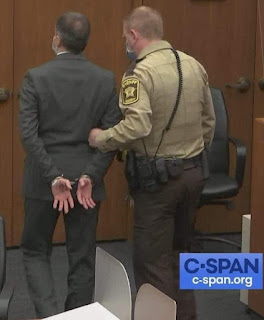Deep Hanging Out: Wanderings and Wonderment in Native California by Malcolm Margolin
My rating: 5 of 5 stars
Deep Hanging Out: Wanderings and Wonderment in Native California is a truly wonderful collection of Malcolm Margolin’s forewords to books he’s published at Heyday, selections from his own books, including The Ohlone Way: Indian Life in the San Francisco–Monterey Bay Area, and many of his articles and interviews from News from Native California, a quarterly magazine devoted to California’s Indigenous peoples, founded by Malcolm, David Peri, and Vera Mae Fredrickson in March of 1987.

Born in 1940, Malcolm Margolin came to Berkeley with his wife Rina in 1970 after two years hippieing around North America in a VW bus, and has been here ever since. He had grown up in a Jewish section of Boston where the older generation spoke Yiddish and “Jews, like Indians, have a long history of being rejected and oppressed…have experienced genocide…practicing a spirituality and using a language not readily available to others…Food and other traditions bound us together; a sense of tribalism prevailed.”
He says, as well, “I was constantly surprised,” as he “hung out” with N. CA Indians; probably because people could sense his kindness, honesty and curiosity; speaking to him in ways they would not have spoken to others; revealing themselves because they knew he would represent them clearly and fairly.
But represent them, he does; and by doing so, as well as researching news reports, ethnographies and settler histories; he is mirroring thourselves as colonizers more clearly back to us in contrast, often demythologized of Savior and Lone Ranger heroics. In the belly of the Hearst Museum with three regalia-making Indian families among the “woodpecker-feather headdresses, obsidian blades of great size and rare color, white deer skins, civet-skin kilts, dentalia necklaces,” of his article on “Wealth and Spirit (1993),” for example, he gently and patiently explains:
“It is difficult for outsiders to understand regalia (ceremonial/ritual/dance adornments) and the role it plays in the lives of the Native people of northwestern California. The dominant culture does not have anything quite like it, and the language and thought structures by which outsiders attempt to describe regalia never quite fit.”
Reading these pages is like getting 200 miles out of town at night, pulling over, turning off the car, walking out into a meadow, hearing nothing but the wind and looking straight up at the thousands of stars in the sky. We are nothing. We are tiny. We are just a piece of a cosmos that barely cares if we snobby, over-mechanized and material-acculturated humans live or die.
Remember that? We have emotional, biological, neurological and ancestral memories of how that was in the thousands of years we spent in hunter-gatherer times. When life in nature itself was awesome. And being in a small, well-known community of interdependent humans who knew we had to depend on each other and follow the sharing traditions and earth conservation so it all would go on and we could survive. For Native Americans, them, (we/them) it wasn’t that long ago.
If only the missionaries/ settlers/miners had had Margolin’s curiosity, humility, respect, breadth of mind!…The Native Californians even share their grief with him of “What Has Been Lost,” the magnitude of “damage done to traditional culture…” and how “to rebuild the self, one first must come to terms with and acknowledge the fullness of loss.”
They carve out of the darkness, not only with courage, but with song, strength and humor. “Deal with what we have and work with what we have…sense the presence of the ancestors” “standing around saying ‘Listen, they’re singing that song again! Isn’t it great? They’re so cute; they’re singing it all wrong, they don’t even know what they’re talking about. It’s so wonderful.’ In that way, you do have to be careful about how you use the songs and ceremonies. But there’s also that element of intent that is so important in connecting back.”
And in dealing with anger, Greg Sarris tells him what Mabel McKay said, “You’re going to let holes grow in your heart, hatred and poison will grow there, and you’re going to poison yourself and you’re going to poison other people….You have another choice. All the things that have happened to you,” she said, “could become medicine. This is an opportunity to doctor."
And more, and more, and more.
From his obvious respect for the individuals, cultural and historical backgrounds of Native Californians; the persistence and generosity of his research, listening to, recording and elegantly writing about their worldviews, experiences and resounding “stories;” I have no doubt of his sincerity and humility in this project.
Others may “play Indian,” snatch fragments for the marketplace, further colonize and insult by appropriating and profiteering, but not Malcolm. He could not have heard all this from them without “walking his talk.” By listening, and by choosing so ably what and how to share.
As Vincent Medina told him, “We learn with the heart.” Tappe ta-ak hin-nan. And as he says, “I feel that the Indian world has a great deal to teach the rest of us…Beauty and wisdom abound.”
View all my reviews














